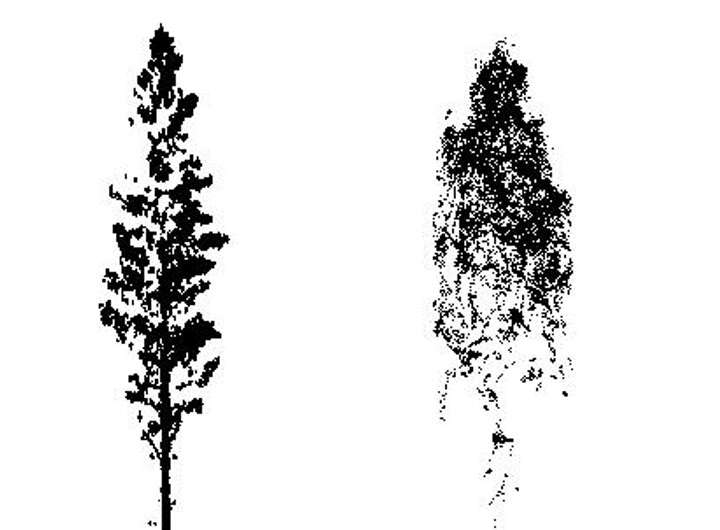Three-dimensional point clouds provide insight into the structural complexity of forests

Structurally complex forests add to biodiversity, increase forest carbon stocks, and help the forest to adapt to climate change. Forest structure refers to the three-dimensional distribution of trees in a given space, and it is affected by genetic factors of individual trees, as well as by surrounding trees, the amount of light and water available, and any possible damages. Forest structure can also be influenced by forest management, and objective assessment of the structural complexity of forests is a prerequisite for enhancing it through different measures.
Traditionally, structural complexity has been assessed by measuring specific attributes from trees and using those to derive forest-specific indexes. However, three-dimensional point clouds generated by various remote sensing methods have enabled a more comprehensive assessment of the structure of individual trees.
The box dimension, which is based on fractal analysis, is a means of measuring, for example, the structure and structural complexity of trees. The method integrates all data provided by a point cloud into a single number, which is determined by calculating the number of boxes required to cover all the points of a tree, and how the number of boxes changes as their size changes. The box dimension simultaneously takes into account several structural attributes of a tree, such as biomass density and distribution, crown dimensions, and branching patterns. The box dimension also increases our understanding of the link between the structure and function of a tree since previous studies have associated it with the productivity and growing conditions of trees.
The box dimension cannot be verified by conventional methods, which is why it is important to know how the values of structural complexity generated by different remote sensing methods compare to each other. The study, published in Forests, compared the ability of terrestrial laser scanning and unmanned aerial vehicle (UAV) imaging to measure the structural complexity of Scots pine trees by using the box dimension.
A sample of over 2,000 trees showed a significant difference between the two methods. On average, the UAV produced 5% higher values of structural complexity than terrestrial laser scanning. The differences can be explained by the number and distribution of the points in the point clouds, estimated tree heights, and the number of boxes needed. Nevertheless, the values determined from both data sets were similar and the correlation between them was 75%. UAV imaging is a constantly evolving field of research, and it can provide a more effective way of assessing the structural complexity of trees in the future, as it can cover larger forest areas. For the time being, however, terrestrial laser scanning provides more accurate results when examining the structural complexity of individual trees, as it produces more detailed data.
More information: Noora Tienaho et al, Assessing Structural Complexity of Individual Scots Pine Trees by Comparing Terrestrial Laser Scanning and Photogrammetric Point Clouds, Forests (2022). DOI: 10.3390/f13081305
Provided by University of Eastern Finland





















